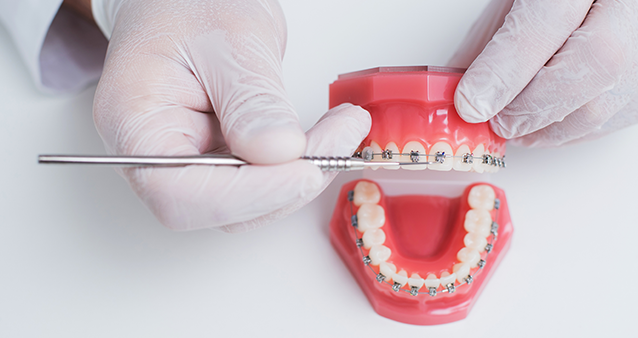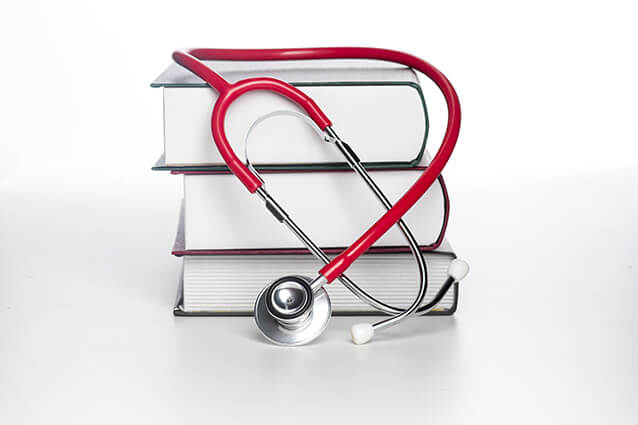What is Medical Aid?
Medical Aid is insurance that gives you access to top-notch private healthcare at a price you can afford. Depending on the plan you choose, it can cover everything from doctor's visits to in-hospital stays, without putting your bank balance in the red. Pretty nifty, right?
Does Medical Aid Cover Braces?
Many parents of teens or tweens know the true price of crooked teeth. But before you 'brace' yourself to break the bank, let's take a look at which orthodontic treatments your Medical Aid plan covers.


Laser Eye Surgery: Will your Medical Aid Cover it?
Laser eye surgery can be life-changing for those who wear glasses or contact lenses. The surgery is quick, relatively painless and comes with a limited potential for side-effects — but it's not cheap. Many people ask whether their Medical Aid will cover the cost of vision-correcting laser surgery and the answer is ...
Does Medical Aid in SA Cover Psychologists’ Services
Are visits to a psychologist covered if you're on a Medical Aid? And which mental health services are available if you're not? Here's everything you need to know.


A guide to your first medical aid
When choosing a medical aid plan for the first time, you should spend a good deal of time assessing your needs – now and for the short-term future. Consider your health situation, budget, and whether you're planning to start a family. Once you've realised what your medical aid requirements are, you'll be a lot better equipped to comparing the different medical aid options, and managing it over time.
Breast reduction surgery – why won’t medical aids cover?
Macromastia is a medical condition that affects women both physically and mentally. Yet most of the time, medical aids still consider breast reduction for this condition as cosmetic surgery. However, some medical aids will consider the medical motivation from specialists but there are no standard protocols to guide a medical aid's decision.

Mammograms and pap smear - do medical aids cover?
With the risk of cancer in South Africa increasing at an alarming rate, regular check-
ups are critical to aid in the prevention and early detection of disease. Medical aids
try to encourage members to go for preventative screening from blood pressure
tests to bone density scans and pap smears to mammograms, of which most plans
will pay for without it coming out of your savings account.


Medical aid for young married couples
There are primarily three types of young married couples, the budget conscious, the active, and the adventurous. At the same time there many more medical aid schemes and products on offer. When choosing a medical aid, every young couple should assess their needs upfront so that they end up with the best medical aid plan suitable.
Medical aid advice for singles in their thirties
The thirties are that stage of life when you're likely to have established yourself in a steady job or career. You've probably also made some big purchases, such as, a house and car leaving very little in the kitty to save for a rainy day. Additionally, your health needs are probably not the same as they were in your twenties. This may be a good time to reassess your medical aid plan to see how it matches up, and to calculate whether it offers you the best value for money.


What is gap cover?
With so many different types of medical cover on offer, from hospital plans to fully
comprehensive, what is this thing called 'gap cover', and is it even necessary? Actually, gap cover is an important short-term insurance product to understand, because how much you need it or not can depend on the medical aid plan you're currently on. This is key, because gap cover is not a standalone product, but rather one that complements an existing plan. We'll walk you through how it works and what you should consider when making your decision.
Medical aid providers: is bigger necessarily better?
As consumers we sometimes tend to think that when it comes to certain products, it’s better to go for the bigger brand names. In some cases and industries, this may be true – where their continuing research and development initiatives or advanced technologies are advantageous to you as a consumer. In the medical aid industry, things are often more complex, with so many providers all offering something slightly different to the next. What is ‘better’ is perhaps less about simply being ‘bigger’ and more about the bigger picture.

Medical aid & health insurance options in South Africa
One of the most common questions medical aid providers receive is “What’s the difference between medical aid and medical insurance?” As consumers, we may be forgiven for thinking they’re the same, and in some ways they are. Both offer some form of cover for certain medical situations, but how they are structured and regulated can vary vastly. Why not find out a little more.

Switching medical aids
Many people don’t realise it but it’s important to reassess your medical aid scheme every year. Schemes themselves will revise their benefits annually, so members should do the same to understand whether they’re receiving the optimum value based on their individual needs. When evaluating which medical aid suits you best, some of the key aspects to consider is figuring out which benefits you’re likely to make the most of, and calculating what your out-of-pocket spend is. Before making the switch, it’s important to investigate the practical as well as financial consequences of changing from one plan to another.


The most cost effective medical aid in 2020
In 2020, savvy consumers are looking to cut costs, scale down, and consume less. From clothes to cars, we're always on the hunt for the best value for money, and it should be no different with our medical aid. But making medical aid decisions is less fun and more cumbersome than choosing a SUV and takes a little discipline. Just as your transportation needs may change as you grow, so do your medical needs. Reviewing your medical aid plan annually is really worth your time and effort, as long as you begin by understanding what your specific needs are in your current situation.

Glossary of medical aid terms
Choosing a medical aid plan is difficult enough on its own, but the industry jargon that comes along with it certainly doesn't make it any easier. Even the more common terms that are bandied about may seem simple enough to understand – but what do they really mean? With a little more basic knowledge in your hands, making your final decision will feel less like guesswork, leaving you better equipped to making the right choices.
